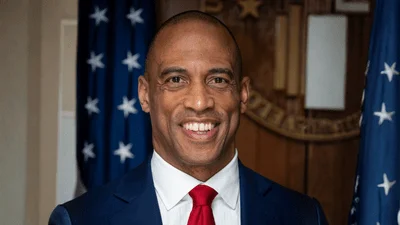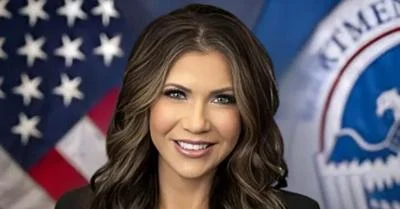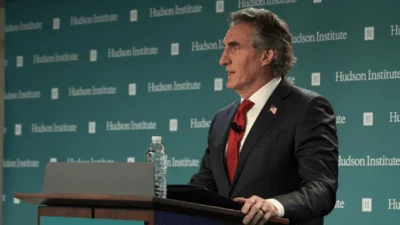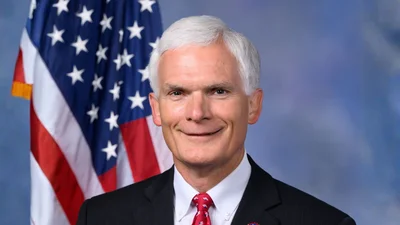EM Update recently spoke with EM Assistant Secretary Anne White about her early tenure as head of the DOE cleanup program and her vision for EM and achieving progress through action going forward.
You’re now about five months in as Assistant Secretary for Environmental Management. Have you developed a vision for where you want to take the EM program during your tenure, and how can that be implemented?
When I was fortunate enough to be nominated and confirmed as Assistant Secretary, I took a long, hard look at this program. I’m no stranger to EM --- I’ve spent most of my career as a cleanup contractor, and my experiences in industry have shaped my philosophies for how I intend to lead this program.
While I have a number of initiatives my leadership team and I are working to implement, I would say I have one overarching goal --- to fundamentally refocus the trajectory of the EM program in a meaningful and lasting way. As I’ve said on a number of occasions, I want to reinvigorate the sense of urgency and the completion mindset in EM that helped propel this program to some of its greatest successes, like the successful cleanups of Rocky Flats, Fernald, Mound and the former gaseous diffusion uranium enrichment plants at Oak Ridge. I believe that is at the core of being able to make meaningful, discrete and tangible progress in accomplishing our important mission.
I am grateful for the strong support of Secretary Perry and senior DOE leadership to help drive this culture change throughout EM. They have a great vision and a tremendous spirit to get work done at our sites, and I intend to capitalize on that to achieve a clarity of purpose to complete site closures in the near-term, as well as those that extend far into the future.
What are your plans over the near-term to help foster this culture change?
One of our major initiatives is to improve how we compete and manage our contracts, including a shift to end-state contracting to enable and drive the accelerated completion of work. We have billions of dollars in procurements coming up at some of our largest sites over the next few years, and I think this represents a significant opportunity to shift our focus toward completion and getting our sites to their intended end use faster.
By moving to end-state contracting, we will have the opportunity to enable our contractors, who represent the best of American industry, to get the job done without undue micromanagement. I want to focus on a “manage the contract/not the contractor" approach, with appropriate and effective federal oversight. I will demand strong performance from our contractors and expect them to bring their “A game", and their “A teams," to our work. At the same time, I will ensure we create an environment where success is possible.
I also want to find new and innovative ways that we can perform the EM mission to allow us to maximize the resources we have and achieve real and tangible reductions in environmental risk and liabilities. I want to work with our regulators to ensure that our commitments reflect attainable outcomes tied to risk-based analyses and future land use. I believe there are opportunities to examine how we can better manage our waste, such as reprocessing waste that represents one of our toughest challenges, and I expect progress on that front very soon. And I want to see how we can drive down the operating and maintenance costs for our facilities, which takes up a significant portion of our annual budget, and utilize that funding to perform actual cleanup work.
How would you say your experience and career in the field have influenced your approach for leading EM?
Over the past 25 years I worked in almost every capacity of decommissioning and environmental restoration, from commercial to governmental to international. I know this is a program that’s capable of achieving big things --- I’ve seen it. I also can appreciate the complex technical challenges that we continue to address.
I began my career performing physical cleanup work - I’ve “suited up" -- so I gained first-hand knowledge and appreciation of what it’s like working in the field day in and day out. I have a deep appreciation for the risks our talented workforce face and that is something I keep in my mind each day. The safety of our workforce, and the public near our sites, is paramount to me and to senior DOE leadership.
During your tenure to date, you’ve had the opportunity to visit most EM sites. What have you brought back from those visits?
It’s been great to get out into the field and get a first-hand look at the progress we’re making and learn more about our remaining challenges. The best part has been the opportunities to meet with the dedicated and talented men and women who are working each and every day to get the job done, including the early career professionals at many of our sites, who represent the future of our success. I love having the opportunity to talk shop!
The EM workforce --- federal and contractor --- deserves the highest respect and consideration. One of my main duties is to tear down the barriers to their success, and I want to work to best optimize our workforce for continued excellence. My leadership team and I want to instill a “see something, say something" attitude when it comes to driving change. I know that those closest to the job can often have the best ideas for how to safely and efficiently perform the mission, and we want to make sure we are providing those carrying out our mission with all of the tools they need for success.
Source: U.S. Dept. of Energy, Office of Environmental Management









